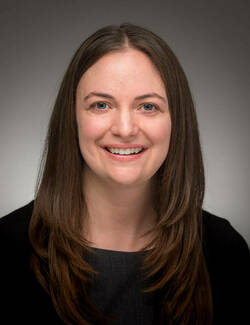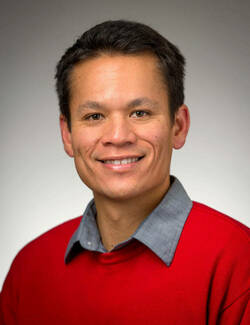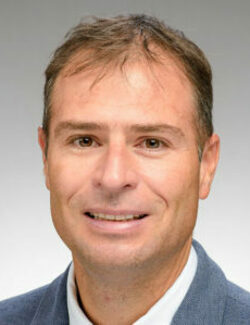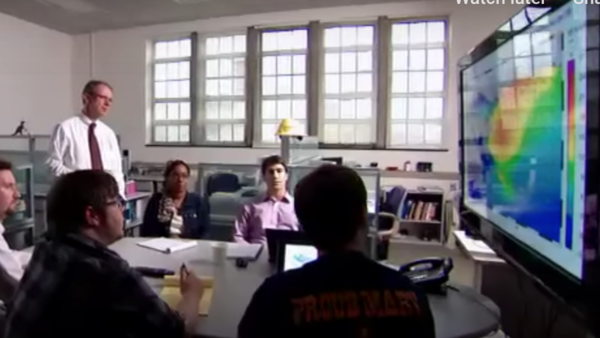Construction & Development
Technology drives fundamental trends in real estate
From the effects of autonomous vehicles on transportation networks, to advances in highly innovative engineering solutions, and to the construction of resilient infrastructure, technology has played, and will continue to play, a critical role in the development of real estate.
How will technology and technological change affect real estate development, investment, and construction in the twenty-first century? Some changes are occurring within the real estate industry itself, such as more precise tools for GPS and mapping, and sophisticated but easily accessible databases like Zillow. More broadly, changes in the national and global economy, from new forms of energy to new forms of technology, will create fundamental shifts in the real estate industry.
FIRE's research generates cutting-edge solutions while considering legal and policy changes that can affect many of these developments. This intersection is critical because of the key role of technology in housing, infrastructure, and global development.
Featured Research
-
Designing Kinetic Bridges, Shelters, and Buildings

Ashley Thrall (Engineering) Thrall is engaging in path-breaking work on innovative structures. Her Kinetic Structures Laboratory is dedicated to investigating the behavior, design, and optimization of kinetic civil infrastructure utilizing analytical, numerical, and experimental approaches. Kinetic bridges, shelters, and buildings include modular systems, which are rapidly movable and deployable.
Current and recent projects include designing rapidly deployable origami-inspired shelters, developing new approaches to rapidly erectable bridge systems, performing topology optimization on modular structures, and investigating prefabricated high-strength rebar systems with high-performance concrete for accelerated construction of nuclear concrete structures. Applications of this research include military operations, disaster relief, and accelerated construction of civil infrastructure.
Thrall was recently featured on Women Lead.
-
Investigating the Effects of Land Acquisitions on Water Competition
Prof. Muller published "Competition for Water Induced by Transnational Land Acquisitions for Agriculture" in Nature Communications (2022).
Abstract

Marc Muller (Engineering) The ongoing agrarian transition from smallholder farming to large-scale commercial agriculture promoted by transnational large-scale land acquisitions (LSLAs) often aims to increase crop yields through the expansion of irrigation. LSLAs are playing an increasingly prominent role in this transition. Yet it remains unknown whether foreign LSLAs by agribusinesses target areas based on specific hydrological conditions and whether these investments compete with the water needs of existing local users. Here we combine process-based crop and hydrological modelling, agricultural statistics, and georeferenced information on individual transnational LSLAs to evaluate emergence of water scarcity associated with LSLAs. While conditions of blue water scarcity already existed prior to land acquisitions, these deals substantially exacerbate blue water scarcity through both the adoption of water-intensive crops and the expansion of irrigated cultivation. These effects lead to new rival water uses in 105 of the 160 studied LSLAs (67% of the acquired land). Combined with our findings that investors target land with preferential access to surface and groundwater resources to support irrigation, this suggests that LSLAs often appropriate water resources to the detriment of local users.
News Feature: "With Land Grab Comes Competition For Water -- And Local Farmers are Likely to Lose"
-
Partnering with Tesla on Gigafactory 1

Arnold and Cusato, along with a team of Notre Dame architecture and engineering faculty, participated in an innovative collaboration with Tesla on their Gigafactory 1 project in Reno, Nevada. Set to be the largest building in the world at over 15 million square feet, Tesla's challenges included providing for optimized manufacturing while allowing for building growth and expansion; and for Reno's leadership, the rapidly increasing population requires they plan for their community in a thoughtful, effective way.
The design studio explored how to move people and materials through the largest building in the world efficiently, while also creating a sense of place. The studio also considered how to work with a local municipality to prepare for the increase in both direct and indirect employment within the community. The students and faculty pursued these ideas using a "First Principles Thinking” approach.
-
Preventing Coastal Flooding
Westerink conducts research in computational science and engineering to help address the issue of storm surge and coastal flooding. In light of events like the flooding of New Orleans due to Hurricane Katrina, he explored how to understand coastal hydrodynamic processes and mitigate risk through high fidelity computer simulations.
Westerink is at the forefront of the development of high resolution heterogeneous unstructured mesh, multi-physics, multi-scale hydrodynamic codes and models for the coastal ocean. He is the co-developer of the widely used ADCIRC finite element based shallow water equation code. ADCIRC has evolved into a community based coastal hydrodynamics code with wide ranging applications within academia, government, and the private sector worldwide. The U.S. Army Corps of Engineers, the Federal Emergency Management Agency and the National Oceanic and Atmospheric Administration all use ADCIRC in support of coastal water level and flooding analyses and forecasts, from the Gulf of Mexico to the great lakes, and for extratropical and tropical forecasting models. His current research is focused on developing the next generation of ESTOFS water level forecast models for NOAA focusing on Puerto Rico and the U.S. Virgin Islands, the U.S. East and Gulf coasts, and Alaska.
He has successfully transitioned these models to practitioners for a wide range of applications including the analysis and design of major flood control projects. Westerink wrote the software that is used world-wide to predict storm surge, and he consulted and aided the U.S. Army Corps of Engineers in rebuilding the levee system in New Orleans after Katrina. His models were tested and proven correct in the most recent hurricanes that hit New Orleans.
-
Teaming up with Engineering Students to Build a Suspension Bridge

Luis Fargier-Gabaldón (Engineering) Prof. Fargier-Gabaldón helped to lead a group of students in building a suspension bridge on Notre Dame's campus.
Wearing hip-waders and carrying drills, Notre Dame engineering students built an 80-ft wooden truss bridge over a narrow waterway, connecting the main campus to the quarter-acre Duck Island on St. Joseph’s Lake. Read the story here.
-
Understanding Seismic Risk
Walsh has worked on assessing and managing seismic risk, sustainability, and resiliency in New Zealand, including publishing at least half a dozen articles pertaining to identifying seismic vulnerabilities in large building stocks and further investigating the business decisions pertaining to retrofits and other remedial actions. Among his recent articles is "Seismic Risk Management of a Large Public Facilities Portfolio: A New Zealand Case Study" (with Reza Jafarzadeh, Nicola M Short & Jason Ingham).
Abstract

Kevin Walsh (Engineering) Purpose: In the interest of advancing practice in the field of facilities management, facility asset managers dealing with regulatory environments pertaining to earthquakes and buildings can learn a great deal from the successes and short-comings of a case study programme from the Auckland Council Property Department (ACPD), which manages the public facilities portfolio for the largest local administrative region in New Zealand in both population and landmass.
Design/methodology/approach: ACPD has initiated its response to New Zealand’s earthquake mitigation mandates by identifying buildings most at risk to an earthquake in its large and varied portfolio through the use of a rapid building evaluation programme strategically targeted to vulnerable building types with consequential attributes including service type, number of occupants, floor area, and geographic location.
Findings: ACPD was able to rapidly cull down its portfolio of approximately 3500 buildings to just over 100 “high-exposure” buildings in urgent need of evaluation, set priorities for future evaluations, estimate needed operational and capital expenditures for long-term planning, and provide useful information to more general facilities management decision-making processes.
Originality/value: A number of major cities around the world in areas of high seismicity have enacted ordinances mandating seismic retrofitting. However, much of the existing guiding literature regarding earthquake-related portfolio evaluations and costs pertains to specific scenarios involving real or hypothetical earthquakes. This case study, in contrast, details the approach taken by a public portfolio owner responding to legal mandates and attempting to quantify and reduce its life-safety risk exposure across a large portfolio as efficiently as possible using readily available information, a rapid building evaluation programme, and best-practice predictive models for consulting and construction work.
